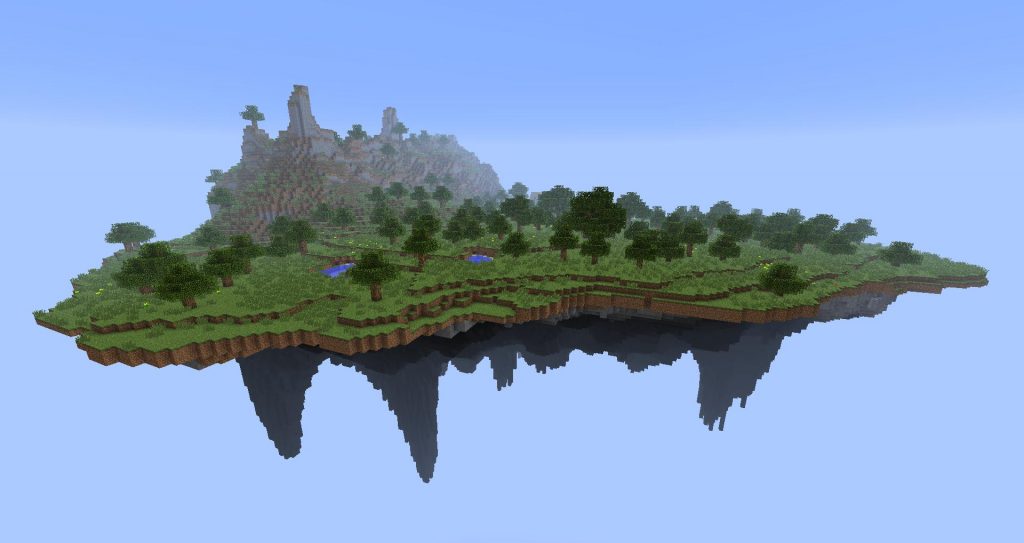Floating Islands (and the Loch Ness Monster) September 20, 2016
Author: Beach Combing | in : Medieval, Modern , trackback
Let’s talk floating islands. A few years ago Beach had a very gentle battle with a courteous Nessie writer Roland Watson. As a sceptic with folklore interests Beach was intrigued by many parts of Ronald’s argument, but one piece of new evidence that stood out was the claim that there was a floating island on Loch Ness and Loch Lomond in respectively the seventeenth and eighteenth centuries. This, of course, gets effortlessly folded, by Roland into the Nessie debate: ‘I would suggest the term ‘Floating Island’ was a phrase applied by Franck [a reporter] rather than the garrisoned soldiers. Did the witnesses to this strange phenomenon on Loch Ness call it a floating island themselves or was Franck keen to link it with Loch Lomond for conversational effect?’ Since then Beach has come across several of these floating islands in his book travels. Here is one from good old Gervase of Arles, the oldest he has yet found.
In the kingdom of Arles, in the diocese of Gap, is the village of Cerzeules, in whose territory a lake of great depth has formed. Now in the middle of the lake a crust of earth has produced a meadow. This crust is free from human contact all year round, but in the hay-making season it is secured with ropes and pulled to the land which borders on the lake; and so it is mown, and the crop is divided out among several co-owners. Once a fair distribution has been made, the ropes are untied, and the crust floats back to take up the same position in the middle of the lake where it had been before.
In regno uestro Arlatensi, diocese Vapincensi, est castrum Cerzeules, in cuius castri territorio lacus alte profunditatis excreuit. Sane in lacus medio crusta pratum fecit, qui per anni circulum ab hominum attactu libera, tempore herbe tondende, applicitis restibus ad terram trahitur lacui imminentem, et sic defalcata sectiones recipit inter plerosque coerede. Facta itaque congrua diuisione, solutis funibus, crusta redit in id ipsum quo fuerat meditulium lacus occupatura.
There are very well documented cases of floating islands and even of sinking, re-emerging and floating islands. They certainly exist and so Gervase’s marvel is really just an interesting freak of nature. Beach was hoping to open a tab on trying to track these floating lake islands and cause, in the nicest possible way, some damage to the physical Nessie in the process. Can anyone help? drbeachcombing AT yahoo DOT com.
Typhon, 29 Sep 2016 Concerning the floating islands, I present you the newest candidate on Kickstarter (Expedition) and Mysterious Universe:
The theory of Nessie the vegetation matt isnt a new one. But I dont buy into it…
And finally a nice summary of the Loch Lomond Monster:
Ruth B, 29 Sep 2016: offers still more…
Norm writes, 29 Sep 2016: There are floating bits of “land” . My Grandmother’s niece had a large farm in Wisconsin, a lake called Mud Lake took up about five hundred acres of the property. The lake was a glacial pothole lake a few hundred feet deep. The tamarack bog had grown out over the edges of the lake for a few hundred yards. We had boards laid down to walk on so that we did not fall through the mat into the depths below when walking to the dockage. The story I was told was that the lake had once been covered over and then sank down about halfway to the bottom. At the end of the lake where the springs came in, the rope soundings went much deeper. Golf course there now…
Bruce T, 29 Sep 2016: There are series of roughly five “floating islands” in a nearby river that were part of a lock entry in the mid 19th century. The islands themselves are part of the rubble piles that were used to anchor the rest of the entry. As navigation of the river was short lived 1840 to about 1860 with the coming of the railroad, the locks and dams were cannibalized to build the rail bed and later log booms to catch rafts of timber floated down river from the 1870’s to roughly 1920. The rubble pilings above the falls where the dam used to be, outlining the entry to the old lock chamber were all that was left. Brush gradually took root in the muck that collected in the pilings, soon disguising the rubble that they grew on. They appeared to be mass of vegetation floating on the surface of the river, about 1/3 of the way into the center channel most of the year. The only way to tell there is something more to them is when high water comes and the saplings on top stand bent but unmoved by the rushing water, everything else out of sight. When the water goes down it appears as if they’ve bobbed back up again, covered in moss and grass, unmoved.


